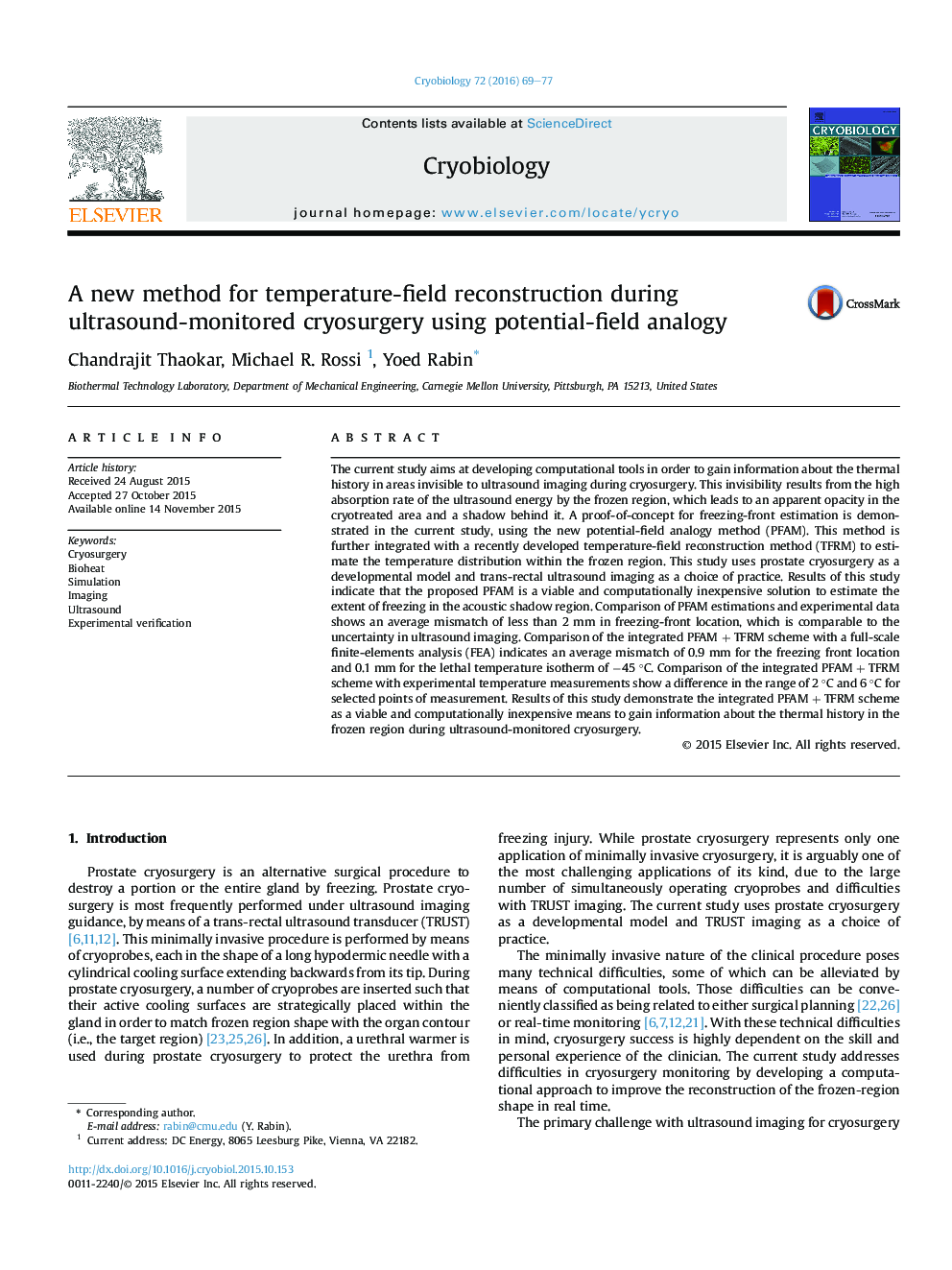| Article ID | Journal | Published Year | Pages | File Type |
|---|---|---|---|---|
| 10927642 | Cryobiology | 2016 | 9 Pages |
Abstract
The current study aims at developing computational tools in order to gain information about the thermal history in areas invisible to ultrasound imaging during cryosurgery. This invisibility results from the high absorption rate of the ultrasound energy by the frozen region, which leads to an apparent opacity in the cryotreated area and a shadow behind it. A proof-of-concept for freezing-front estimation is demonstrated in the current study, using the new potential-field analogy method (PFAM). This method is further integrated with a recently developed temperature-field reconstruction method (TFRM) to estimate the temperature distribution within the frozen region. This study uses prostate cryosurgery as a developmental model and trans-rectal ultrasound imaging as a choice of practice. Results of this study indicate that the proposed PFAM is a viable and computationally inexpensive solution to estimate the extent of freezing in the acoustic shadow region. Comparison of PFAM estimations and experimental data shows an average mismatch of less than 2 mm in freezing-front location, which is comparable to the uncertainty in ultrasound imaging. Comparison of the integrated PFAM + TFRM scheme with a full-scale finite-elements analysis (FEA) indicates an average mismatch of 0.9 mm for the freezing front location and 0.1 mm for the lethal temperature isotherm of â45 °C. Comparison of the integrated PFAM + TFRM scheme with experimental temperature measurements show a difference in the range of 2 °C and 6 °C for selected points of measurement. Results of this study demonstrate the integrated PFAM + TFRM scheme as a viable and computationally inexpensive means to gain information about the thermal history in the frozen region during ultrasound-monitored cryosurgery.
Related Topics
Life Sciences
Agricultural and Biological Sciences
Agricultural and Biological Sciences (General)
Authors
Chandrajit Thaokar, Michael R. Rossi, Yoed Rabin,
